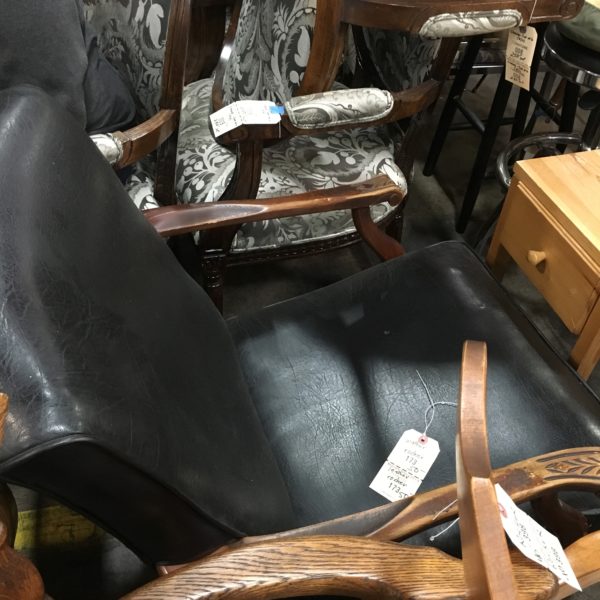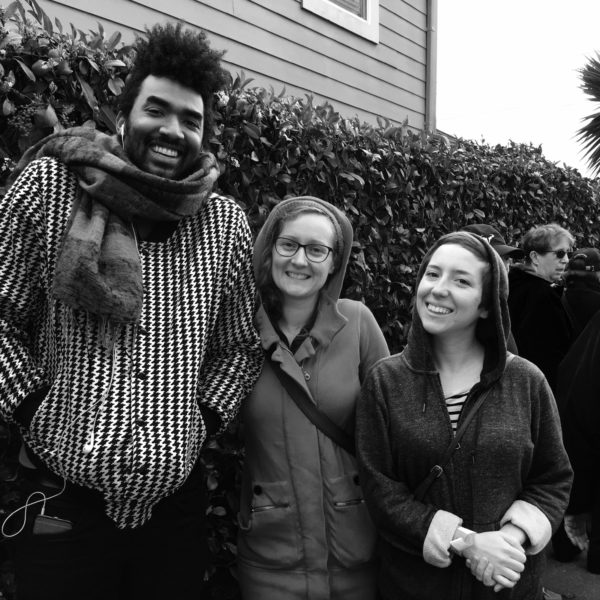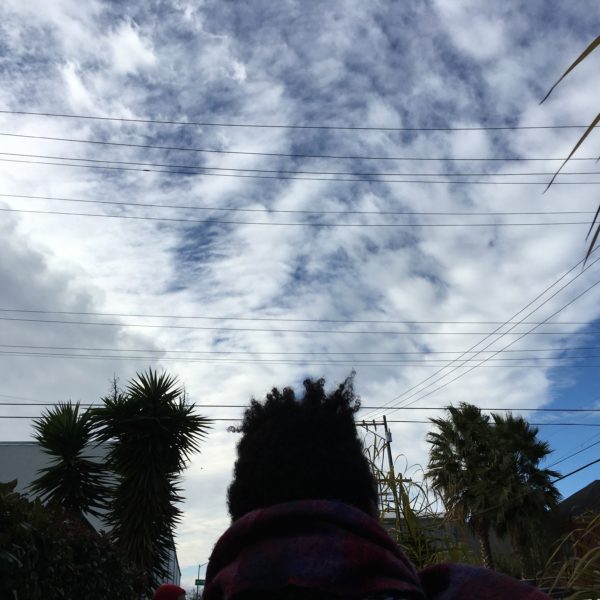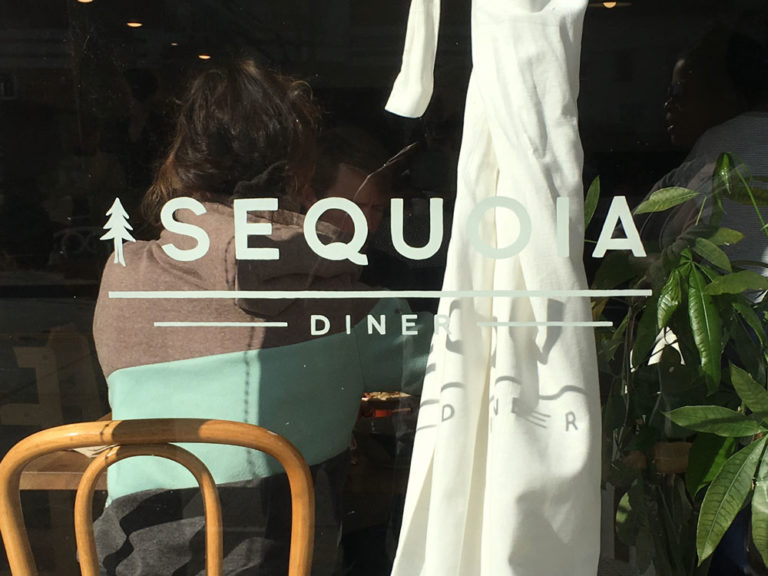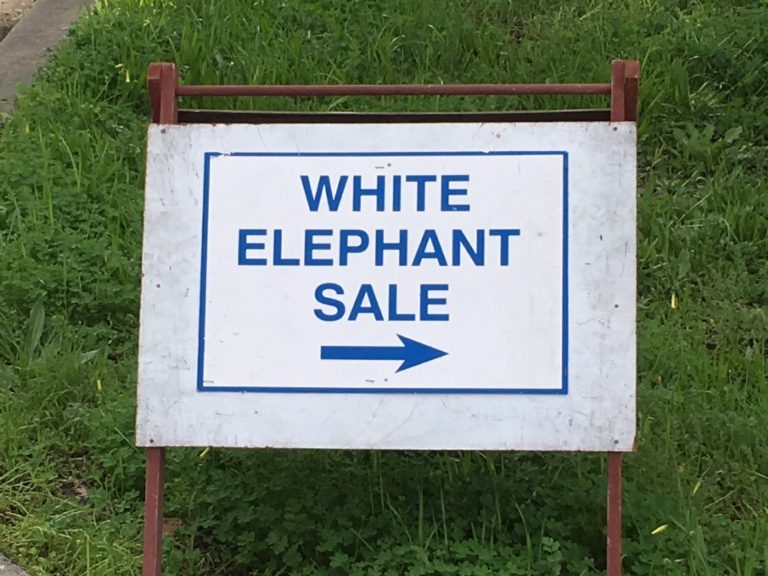
Rummage sales (or flea markets) fascinate me, more than ordinary shopping. I say this because there’s kind of a spiritual exchange occurring at a rummage sale. I started thinking about why I (or we) love them so much and it’s not because we’re buying old/vintage/cooler era shit – well, not totally. It’s because we’re comparing our sensibilities alongside someone who came before us. There’s somewhat of a space-time transcendence happening when you find the mid-century modern bar cart you would’ve identified with had you been alive and modern, mid-century. There’s something spiritual about wondering who once used it to make the dry, shaken martini that, now, you will use to make stirred and dirty.
This esoteric fascination is the reason there are shows like American Pickers, Flea Market Flip and the like. Yeah, the fact that they resell stuff for more money is interesting, but Mike really gets geeked when he finds that bike that transports him to an earlier era of himself.
I was going to open with this bit about how I found a 25” Balrog, you know, of Khazad-Dum, at Oakland’s renowned White Elephant rummage sale, some years back. I made the mistake of taking a beat to think it over. A minute later, I learned lesson #1 of grand rummage sales: if you’re not sure you want it, grab it anyway because someone else will.
History of Oakland’s White Elephant
Last year, after grabbing everything I wasn’t sure I wanted, I ended up with a 1950’s adding machine that weighed more than a modern day desktop computer and, like a misplaced diaphragm, had been preventing my car from fully entering the garage (had to store it some place). But the adding machine intrigued me, every time I insufficiently drove in, because it reminded me that something I enjoyed (that act of shopping) was, in the case of rummaging, an art more than a science.
In 1959 the sale made $500…in 2016 it made $2.13 million.
So I set about learning a bit more of this art that was the White Elephant Sale (WES). According to the sale’s history, the Oakland Museum Women’s Board, which dates back to the beginning of the Oakland museum in 1959, began organizing the sale in order to guide their future for volunteer support and how they would define funding priorities. In the 60’s, the sale became a hot property, taking place each year in vacant stores or warehouses provided by the city. Over the course of the next 30 years, the sale became so big the OMWB eventually moved into their current building, a 96,000 square foot warehouse along the Oakland estuary, which has enough space to house the millions of items the sale carries each year.
In 1959, the sale made $500 for the Oakland museum. In 2016, the 57th annual sale made $2.13MM. Over the years the WES has contributed more than $23.5MM, including a trust for the purpose of purchasing art and artifacts for the collection, funding exhibitions (a really cool sneaker culture one there now), donations for building renovation and grants for educational, public and family programs. The sale is the largest source of annual financial support to the museum, second only to the city of Oakland. So we’re talking beyond belt buckles and old Polaroid cameras…though, like any self-respecting rummage sale, there are plenty of those too.
Co-Chair: Monica Beary
On a very clear Saturday in early January I spoke with Monica Beary, one of the co-chairs for the WES in 2017. A cheerful lady whose physicality and manner reminded me of a kinder Nancy Reagan, Monica began her involvement some years ago by donating to the sale. Soon after retirement, she started volunteering for the White Elephant Sale on a regular basis. After a question about getting 1st dibs on some of the items, she admits, somewhat surreptitiously, that if you donate, you can receive a sticker to shop during the month of February (prior to the official March sale, but after the “Preview sale” which costs money to attend and occurs on the last Saturday in January).
We spend some time talking about everything from the amount of items for sale: “…millions of them. In the “bric-a-brac” section and others, they sell smaller things, in other sections they’re selling big pieces of furniture (i.e. antique dining table sets and armoires)”; to the strangest items that never made the cut: “Last year the (WES) van picked up several taxidermy specimens (marlins as big as oversized doors) and we can’t sell those…they picked up what was once an olive gibbon, shot in South Africa. It was stuffed, scary and ugly…we didn’t want to sell it. It’s not an endangered species in California but dead animals are not what we want to sell. So we had US Fish & Wildlife come take it off our hands.”
When I asked Monica how there come to be so many antiques, eccentric and rare items she mentions generational turnover. “People are cleaning out their house which dates back to the early 1900’s, or their mother died and they’re trying to sell the house, they just want to get rid of stuff.” Some of that “stuff” has been antique collectible toy cars from the 40’s, she tells me.
“There are people already in line at 6:30 in the morning. They’ve been here in their blankets all night. The preview sale, on the last Sunday in January, is when early shoppers and dealers come. They usually make a beeline for furniture, jewelry, art or toys. ”
“Are there ever fights, or disagreements that happen over collectibles?” I asked.
After giving it some thought, a memory came to light. “There was one in the toy dept. We had those TootsieToy vintage cars and two men came to the case at the same time. While one was looking and making up his mind the other was trying to grab them and go. Sometimes people are not as well behaved. But the vast majority of people know it’s all for a good cause.”
Details:
- The Oakland White Elephant Sale is an annual rummage sale occurring on the first Saturday and Sunday of every March (there’s a paid preview sale day on the last Sunday in January)
- The sale started in 1959 by the Oakland Museum Women’s Board and made $500 for OMCA; in 2016 they made $2.1MM
- The OMWB makes up 21% of the Oakland Museum’s total revenue
- All accepted item donations are tax deductible
- At the end of the sale there are donations that go to Goodwill, and some items that don’t sell get recycled

